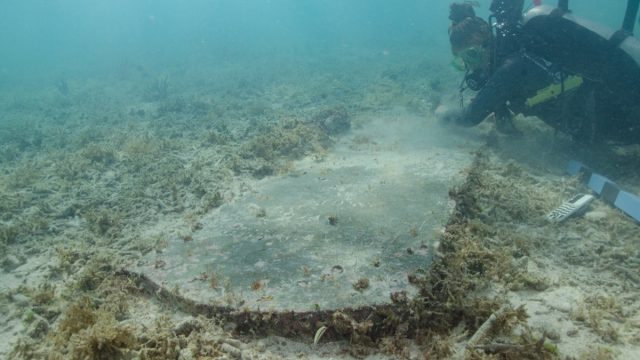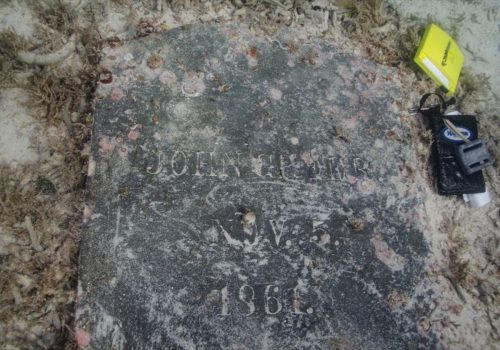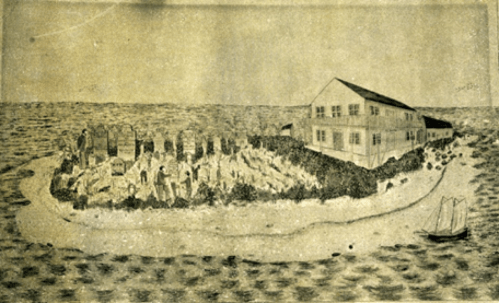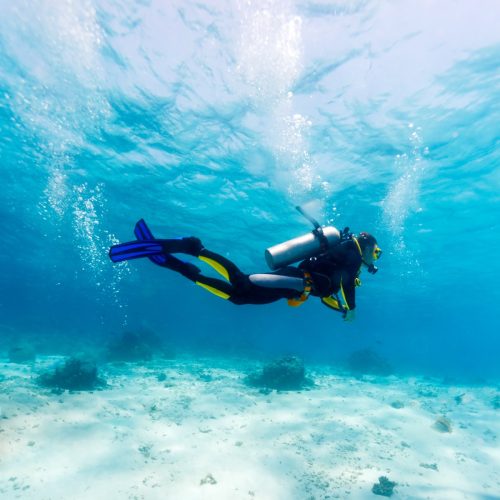19th Century Underwater Hospital and Cemetery Discovered at Florida National Park

National parks offer some of the United States’ most breathtaking sights. Visitors are amazed by Old Faithful at Yellowstone National Park and the many overlooks at the Grand Canyon, but at Dry Tortugas National Park in the Florida Keys, there’s a spectacle you can’t see—because it is underwater. According to a press release from National Park Service (NPS), archeologists discovered a 19th century quarantine hospital and cemetery on a submerged island off the coast of Garden Key, which is home to Fort Jefferson and the park’s headquarters. Read on to find out how the site was discovered, and what archeologists found.
READ THIS NEXT: Yellowstone National Park’s Roads Are “Melting”—Here’s What That Means for Visitors.
An NPS archeologist first spotted the site.

NPS maritime archaeologist Joshua Marano first spotted the site in 2016 while he was flying over the Gulf of Mexico, The New York Times reported. Marano thought the pattern might indicate a lighthouse, but a survey conducted in Aug. 2022 revealed that it was actually an entire island.
“There was dry land here at one point. There was a structure on that island at one point,” Marano, who is also the project director for the survey, told the NYT. “When did it disappear?”
According to the NYT, Dry Tortugas National Park was once comprised of 11 islands, but today, there are only six. Per the NPS release, islands have likely been submerged due to the effects of climate change.
“While the facilities identified in this survey were originally built on dry land, the dynamic conditions caused many of the islands to move over time,” the NPS release reads. “Climate change and major storm events have even caused some islands to settle and erode beneath the waves.”
Surveyors found one well-preserved grave.

On the island, archeologists found a burial ground, which was identified as Fort Jefferson Post Cemetery.
Both military members and civilians were buried in the cemetery, but only one specific grave, belonging to John Greer, has been discovered so far. Greer, a laborer who worked at Fort Jefferson, died on Nov. 5, 1861, according to the headstone discovered by divers. The circumstances of his death remain unknown. However, his headstone was made from greywacke, which is the same material used to build the first floor of Fort Jefferson, the NPS said.
In conversation with the NYT, Devon Fogarty, one of Marano’s graduate students at the University of Miami who helped survey the site, said discovering the gravestone was astonishing, as the headstone was remarkably well preserved.
“I didn’t believe it,” she said. “It felt like it shouldn’t be happening.” Marano added that finding the intact grave marker is “a once in a million chance.”
RELATED: For more up-to-date information, sign up for our daily newsletter.
The quarantine hospital housed yellow fever patients.

According to the NPS, the islands and waters around Fort Jefferson are known for housing military prisons during the Civil War, but they went beyond that. The surrounding islands were also used for military training, as lighthouse stations, and as naval coaling outposts.
But with more people convening on the islands “the risk of deadly communicable diseases, particularly the mosquito-borne yellow fever, drastically increased.” In fact, dozens of those staying at Fort Jefferson died from yellow fever between the 1860s and the 1870s. This prompted the use of quarantine hospitals on other islands near Garden Key, likely saving hundreds of other people from contracting and dying from the disease, the NPS said.
Fort Jefferson was abandoned in 1873, ending operations on quarantine hospitals. However, between 1890 and 1900, the fort was again used by the U.S. Marine Hospital Service. According to the NPS, the recently-discovered hospital was used to treat yellow fever patients during this decade.
Research at the site is ongoing.

The NPS said that experts are conducting ongoing research to learn more about Greer and other individuals that were interred on the island.
“This intriguing find highlights the potential for untold stories in Dry Tortugas National Park, both above and below the water,” Marano said in the NPS release. “Although much of the history of Fort Jefferson focuses on the fortification itself and some of its infamous prisoners, we are actively working to tell the stories of the enslaved people, women, children and civilian laborers.”
However, Greer’s grave will not be disturbed and the exact location of the hospital and cemetery aren’t going to be revealed, the NYT reported.
“In the Florida Keys, we’re in the birthplace of modern treasure hunting,” Marano told the outlet. “A lot of times we want to leave it in place, because it’s going to be better protected.”
In the press release, the NPS added that the “submerged cultural heritage is protected under Federal law.”